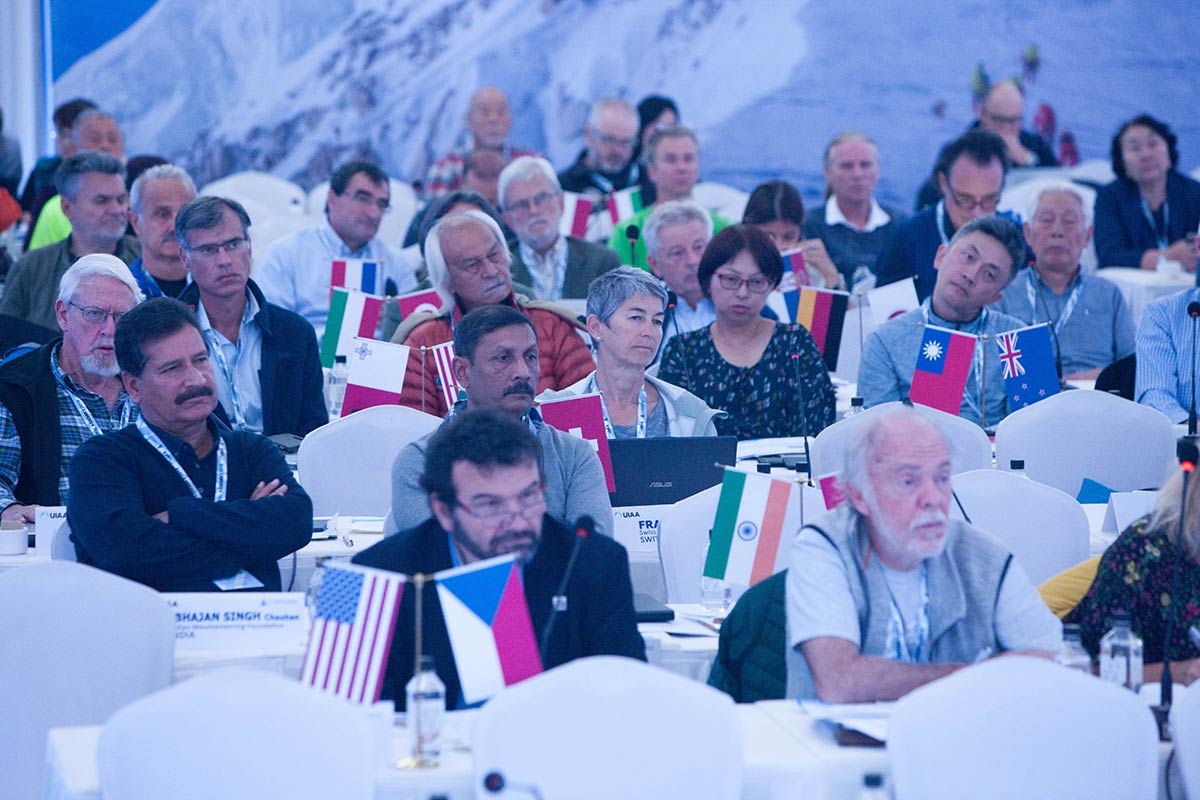As part of its commitment to tackling climate change and reducing its own CO2 emissions, the UIAA has published its first annual Carbon Footprint Calculation.
This report, covering 2018, outlines the ongoing results of monitoring and reporting of the UIAA’s carbon footprint, which is in response to its signed commitment in early 2019 and participation under the United Nations Framework Convention on Climate Change (UNFCCC) Sports for Climate Action. As a participant in this initiative, the UIAA is required and expected to adhere to five principles these being:
Principle 1: Undertake systematic efforts to promote greater environmental responsibility;
Principle 2: Reduce overall climate impact;
Principle 3: Educate for climate action;
Principle 4: Promote sustainable and responsible consumption; and
Principle 5: Advocate for climate action through communication.
Under Principle 2: Reduce overall climate impact, the UIAA is expected to “measure and understand” its carbon footprint in order to set targets to reduce overall climate impact. Knowing how to define these targets requires first measuring and understanding how its travel and activities contribute to CO2 emissions, requiring a ‘baseline’ to compare progress over time. The initial task is to establish and report on an indicative baseline and continue to gather data to monitor how emissions trend over time. In parallel to this, the UIAA can also use this data to start seeing where and which activities create biggest impact and then suggest practical means to consider reducing this impact.
Many travel policies to reduce CO2 impact promote the principle of “avoid, reduce, compensate” (in that order). The UIAA, through the support and participation of its Mountain Protection Commission, will seek to draft such as policy as a next step in its fulfilment of the five principles set out by the UNFCCC.
“Participating under the UNFCCC Sports for Climate Action initiative has provided us with a great opportunity to truly demonstrate our commitment to see action taken on climate change, and most importantly to also enact on the declarations and aspirations that the UIAA has voiced over the years on this pressing issue of our time,” explains UIAA Mountain Protection Commission President Dr Carolina Adler. “The UIAA Mountain Protection Commission is particularly interested to see how our reporting evolves over time, and of course to support the UIAA and its members in this important learning experience and journey ahead”.
Scope
This is the first carbon footprint calculation of the UIAA. The infrastructure information was provided by the Swiss Alpine Club (SAC) with whom offices are shared. Travel information was gathered through attendance sheets of various meetings. The biggest airport in the country of origin was considered as point of departure for all delegates, while the nearest and most relevant airport was considered as point of arrival for all meetings. Direct travel was assumed. Local travel, via car and/or public transportation, was not considered for the 2018 calculation, but will be in the future. All delegates and staff will be asked to submit their travel information during meetings using a survey issued by the UIAA office.
Not included in the 2018 carbon footprint calculation are indirect impacts of UIAA events and meetings, such as the origin and travel of goods and resources; electricity; heating; infrastructure; etc. The UIAA will seek to gather this data for its 2019 report.
Limitations
The accuracy and completeness of the 2018 carbon calculation is somewhat limited.
First of all, direct travel by plane was assumed for most delegates and staff, unless accurate information was available. No survey collecting clear and accurate information regarding attendance and travel to meetings was distributed and collected up until this point. The reason for this omission is to avoid inundating delegates with emails, learn from a first calculation and know exactly what to ask for in 2019.
Second of all, no local travel via car and/or public transport was considered for the 2018 calculation. The focus remained on travel by plane, as it is proven to spike CO2 emissions significantly more than any other transportation type.
Lastly, the 2018 carbon footprint calculation doesn’t effectively display the many ways additional CO2 production was avoided, limited and already minimized by the UIAA, its delegates and staff up until this point. Nonetheless, the 2018 calculation will provide a base for comparing results in the future and allow a more accurate, complete and focused edition in the coming years.
Methodology
As a first step, attendance sheets of all UIAA meetings and events were gathered. The largest “home” airport of each delegate, staff member or else was determined, considering their country of origin. The closest and most relevant airport in regard to the meeting or event locations was selected. CO2 emission calculations of all relevant travel were done for both ways, there and back. https://www.carbonfootprint.com/calculator.aspx was used for all calculations.
Lastly, information regarding the office infrastructure was requested from the Swiss Alpine Club (SAC) and calculations were done via the same calculator as highlighted above.
The full report, focusing primarily on travel of different groups representing the UIAA, can be downloaded here.
Main image: The 2018 UIAA General Assembly in Ulaanbaatar, Mongolia was one of the events measured as part of the UIAA Carbon Footprint Report



